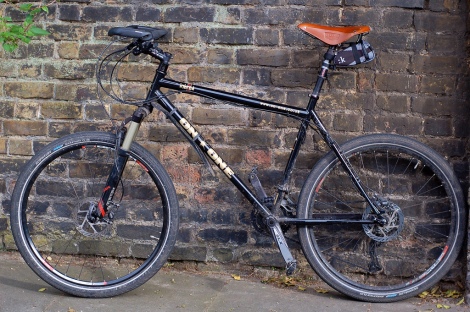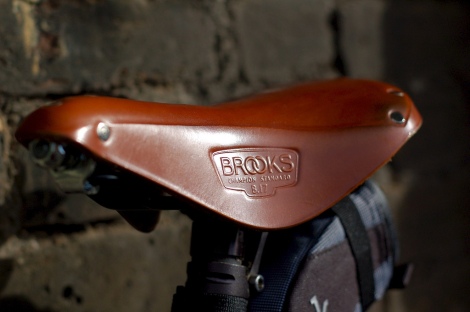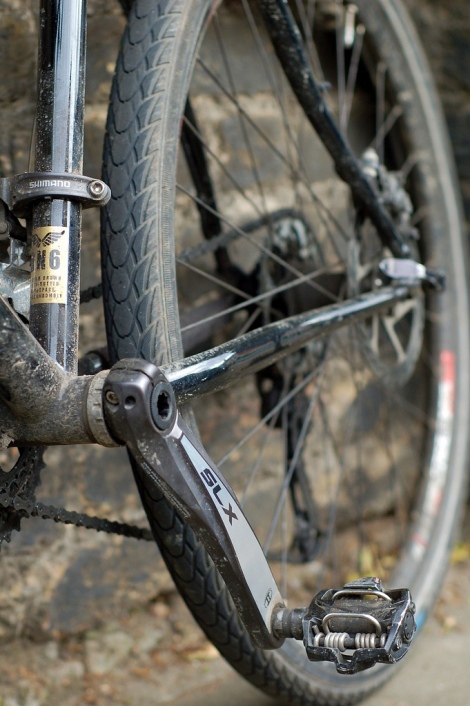So the plan is slowly developing. I need to do a bit of work on the route, nothing too detailed but a general idea. However, what is more important is to sort out a few key items of kit, in time to be able to do some kind of test run.
This post is a tiny bit of a techfest, but when you start looking into kit, the information out there and options can easily become overwhelming! There is a balance to find between going completely unprepared, doing some decent research and buying some decent kit that will be an investment and last for (hopefully) many more trips after this one, and trying to avoid spending all of your time working out whether component ‘x’ is better than component ‘y’ and spending a fortune in the process.
I’ve been slowly buying a few things for the bike but have hesitated in some areas, not sure whether to save money and use what I’ve got, or whether it is worth buying a couple of bits. If I write some of these down here, it might help me focus a little!
the bike
My On-One Inbred. A simple steel frame currently built up for commuting with bits I had. They have a little bit of a cult following and you see them made up as cross country hard tails, commuting singlespeeds, and fully loaded tourers.
The key components currently on the bike, over which I have some decisions to make are as follows:
forks
Currently the bike has some RockShox Reba forks that I had from my previous hardtail cross country bike. These are great mountain biking air suspension forks. I’m very tempted to leave them on to save the hassle of swapping them out, but lots of advice is to just pick up a set of rigid steel forks. This is because rigid forks are lighter, more reliable (if the oil seals go on the air forks then they’re a bit buggered), and there are a limited number of pannier racks and mudguards that will fit a suspension fork. Although there are some proponents of using suspension, (Tom, for example) especially if you know you’re going to be on rough roads for weeks, I think I’ve decided to get a pair of Surly 1×1 steel forks which will take my current disc brakes, V-brakes if I ever need to put them on, are about 0.5 kg lighter than my Rebas, and will take mudguards and racks quite easily.
This also means that I have an excuse to buy another hardtail frame and use the Rebas to build up a hardtail for some proper mountain biking. Well, it would be a shame for them to sit in the shed unused 🙂
brakes
The bike has some fairly standard mountain bike hydraulic disc brakes – Avid Juicy 3s. There are the differing opinions (similar to those on suspension forks) about whether hydraulic brakes are reliable enough for touring (a hose break and leak of fluid renders them useless without replacement hose and fluid). Again, Tom provides a good overview of the arguments. For this trip, where a bike shop will never be that far away, I’ll stick with them for now. The bike will be set up with the right fittings to take some v-brakes if the worst happens and I need to buy some cheap replacements on the way.
saddle
Brooks make lovely old school leather saddles that gradually mould to the shape of your arse (sit bones to be technically correct) over a long period, become (allegedly) like a pair of slippers, and last forever if looked after. When I decided to take a long ride, I bought one of their classic B17 saddles pretty quickly so I could work it into shape on my daily commutes to work. So far, so good – it feels great.
wheels
My current cross country mountain bike wheels with their Hope hubs are fine for commuting and mountain biking, but all advice for touring with a full load is to invest in some 36 spoke handbuilt wheels with touring rims. The wheels take a huge amount of stress and if they’re not tough enough and built correctly, you’re likely to experience a problem. And a problem with a wheel is probably one of the most ride-stopping and awkward to fix that you may experience. So I think I may be purchasing some of these, though I haven’t decided yet. More research needed on this item!
headset
This holds the fork in the frame whilst allowing the fork to rotate on bearings so you can steer. If you’re serious about buying a headset that will need minimal maintenance and probably outlast the bike, Chris King is the most legendary of brands, and is what I’ve treated myself to.
drivetrain
This is the bottom bracket, cranks, front chainset, rear cassette, chain, front and rear dérailleurs, and the front and rear shifters. Some key components here. I had some bits and pieces that had been left over from an old bike but a couple of items needed replacing and I found a great deal on a full set of Shimano SLX parts so got the lot.
They get great reviews for being good value for money, robust, light and reliable. And they sport a pretty cool gun metal look too. So these will stay. The only item that could get changed is the bottom bracket – if this needs replacing before I go, I may invest in another Chris King bit of bling… 🙂
Right, thats the key stuff… more a bit later on other exciting items such as racks, panniers, mudguards and tyres!








That looks a great bike. I used an Inbred for rough road touring in the Himalaya – a good no-nonsense frame. I only changed it as I found the frame a bit on the ‘stretched’ side for me.
LikeLike
Cheers. It does seem like a good bike for the job but I guess I won’t really know until I use it in anger… In the meantime, there’s a fair bit of fettling going on!
LikeLike